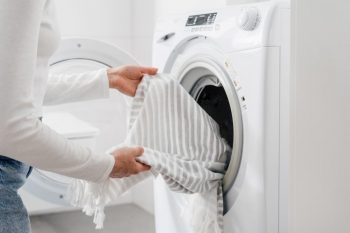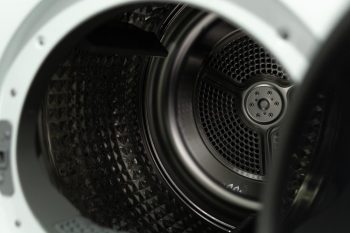
Dishwashers are a staple in most modern kitchens, offering a convenient and efficient way to clean up after meals. But have you ever wondered how a dishwasher dries your dishes? This process involves more than just hot water and soap. In this article, we’ll explore the technology behind how dishwashers dry dishes, the role of rinse aids in the process, and some tips to improve your dishwasher’s drying performance.
Dishwashers dry dishes using different methods such as evaporation, electric heating elements, heated air drying, and condensation drying. The dishwasher heats up the water during the wash cycle and the residual heat helps evaporate the water from the dishes. Some dishwashers use an electric heating element to heat the air inside, causing the water to evaporate. Others combine a heating element with a fan to circulate the heated air, or use condensation drying where moisture is pulled off dishes and forms on the cooler surface of the dishwasher, which then drips down and is drained away. Rinse aids also play a crucial role in the drying process by reducing the surface tension of water droplets, allowing water to slide off dishes more easily.
The Science Behind Dishwasher Drying
Dishwashers use different methods to dry dishes, and these methods can be categorized into four major drying technologies:
- Evaporation: This method relies on the natural process of evaporation to dry dishes. The dishwasher heats the water during the wash cycle, and the residual heat helps evaporate the water from the dishes.
- Electric heating element: Some dishwashers have a built-in electric heating element that heats the air inside the dishwasher, causing the water on the dishes to evaporate.
- Heated air dry: This method combines the electric heating element with a fan to circulate the heated air, speeding up the drying process.
- Condensation drying: This method uses the physics of condensation to pull moisture off dishes. The dishwasher rinses dishes in hot water at the end of the cleaning cycle, and the condensation forms on the cooler surface of the stainless steel tub, which then drips down and is drained away.
The Role of Rinse Aid in Drying
Rinse aid plays a crucial role in the drying process of a dishwasher. Despite its name, rinse aid is more of a drying aid than a rinsing agent. It contains surfactants, which lower the surface tension of water, allowing it to spread into thinner sheets and slide off dishes more easily. This prevents water droplets from forming and clinging to surfaces, which can leave behind spots and mineral deposits, especially in areas with hard water.
By reducing the surface tension of water droplets, rinse aid helps water run off dishes and the interior of the dishwasher more effectively during the rinse cycle, promoting better drying and reducing the formation of spots, streaks, and white residue.
Energy Efficiency of Dishwashers in Drying Dishes
Dishwashers can be energy-efficient in terms of drying dishes, especially when using certain drying technologies. Heat drying uses forced hot air to turn moisture into steam, which is then pushed out through exhaust vents. This method can be energy-consuming.
Condensation drying, on the other hand, is significantly more energy-efficient and hygienic. This method rinses dishes in hot water at the end of the cleaning cycle, causing condensation to form on the cooler surface of the stainless steel tub, which then evaporates.
Common Issues Preventing Dishwashers from Properly Drying Dishes
There are several common issues that might prevent a dishwasher from properly drying dishes. Some of these issues can be easily fixed, while others might require professional assistance. These include poor dish placement, incorrect cycle settings, low rinse-aid levels, a blocked or broken vent, and a faulty heating element.
To fix these issues, start by checking your dish placement, cycle settings, and rinse aid levels. If these adjustments don’t resolve the problem, inspect the vent and heating element. In some cases, you may need to consult a professional appliance technician for further assistance.
In conclusion, understanding how your dishwasher dries dishes can help you optimize its performance and ensure that your dishes come out clean and dry every time. Whether your dishwasher uses evaporation, an electric heating element, heated air dry, or condensation drying, knowing the process can help you troubleshoot any issues and make the most of your appliance.
Frequently Asked Questions
What is a rinse aid and where can I buy it?
Rinse aid is a liquid product designed to help improve the drying performance of dishwashers. It’s typically added to a designated compartment in your dishwasher and is automatically released during the rinse cycle. You can buy rinse aid at most grocery stores, home improvement stores, or online.
How often should I add rinse aid to my dishwasher?
The frequency of adding rinse aid to your dishwasher depends on how frequently you run your dishwasher and the rinse aid dispenser’s capacity. Some dishwashers have a rinse aid indicator light that signals when it’s time to refill. Generally, you should check the rinse aid level monthly and refill as needed.
Are there any alternatives to rinse aid?
Yes, if you prefer a more natural alternative, white vinegar can be used as a rinse aid. Vinegar’s acidic nature helps to break down the minerals in hard water, preventing spots and streaks on dishes. However, you should check your dishwasher’s manual before using vinegar as some manufacturers advise against it due to potential damage to the dishwasher’s parts.
Can I use my dishwasher without a rinse aid?
Yes, you can run a dishwasher without a rinse aid. However, rinse aids are designed to enhance the drying process and prevent water spots on your dishes. If you decide not to use a rinse aid, you might notice your dishes are not as dry or clear as they could be.
Why are my dishes still wet after running the dishwasher?
If your dishes are still wet after running the dishwasher, it could be due to various reasons such as poor dish placement, not using a rinse aid, choosing a low-heat drying cycle, or a technical issue with the dishwasher itself. Refer to the section “Common Issues Preventing Dishwashers from Properly Drying Dishes” in the article for more details.












